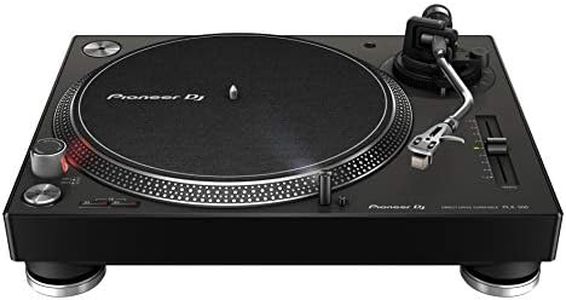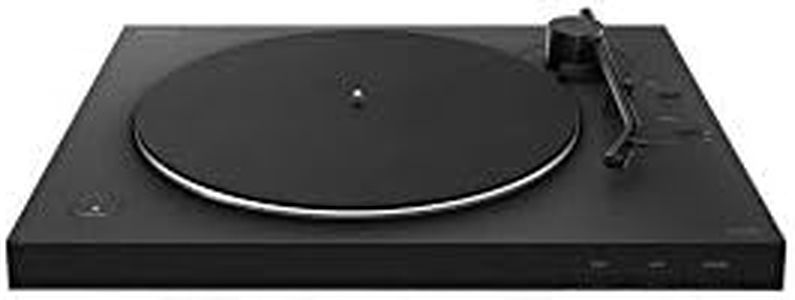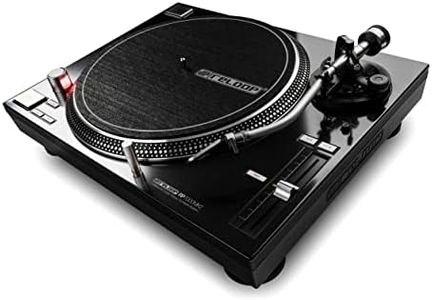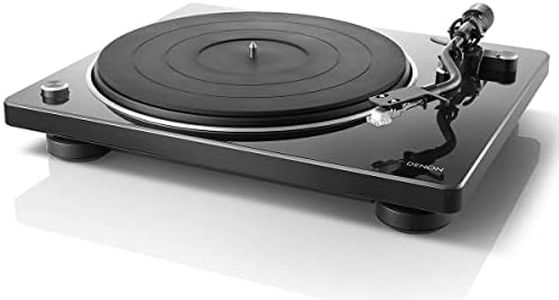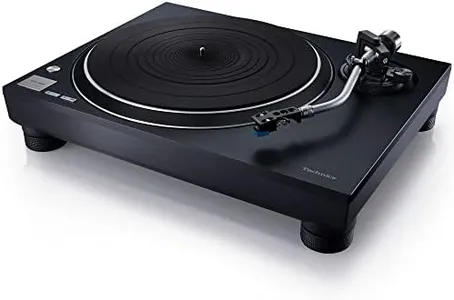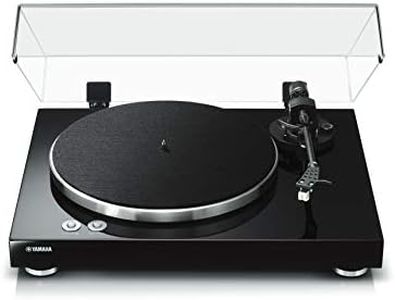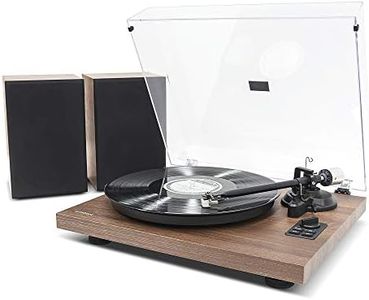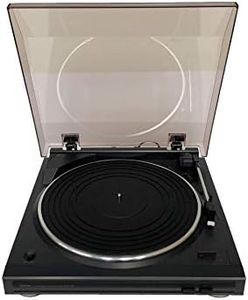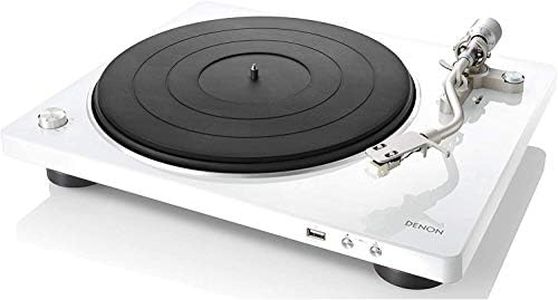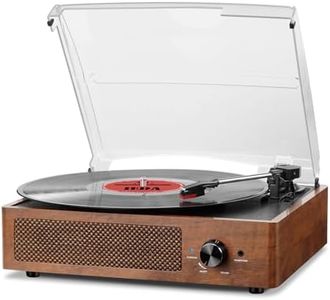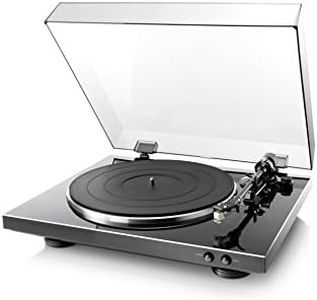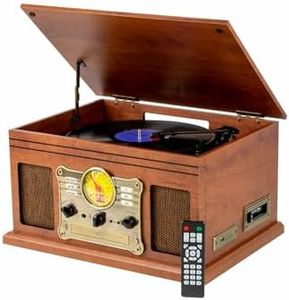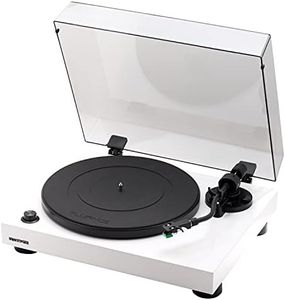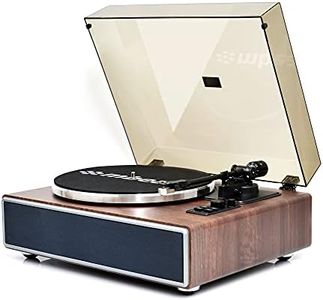We Use CookiesWe use cookies to enhance the security, performance,
functionality and for analytical and promotional activities. By continuing to browse this site you
are agreeing to our privacy policy
10 Best Audiophile Turntables
From leading brands and best sellers available on the web.Buying Guide for the Best Audiophile Turntables
Choosing an audiophile turntable is about finding the right balance between sound quality, user-friendliness, and compatibility with your existing audio setup. As an audiophile, you’re likely interested in extracting the finest sound from your vinyl records, so attention to detail matters. Begin by thinking about how you’ll use your turntable—will it be a centerpiece for critical listening, or part of a multi-use entertainment system? Consider how hands-on you’d like to be with setup and maintenance, and what other equipment (like amplifiers or speakers) you already own. By focusing on the following key specifications, you can confidently narrow your options to find a turntable tailored to your needs and listening preferences.Drive TypeDrive type refers to the mechanism that spins the platter on which your record sits, and it comes in two main types: belt-drive and direct-drive. Belt-drive systems use an elastic belt to connect the motor to the platter, which tends to better isolate vibrations and enhances audio clarity, especially preferred by purists who prioritize sound above all else. Direct-drive systems have the motor attached directly to the platter, leading to stronger torque and more consistent speeds, making them favored by DJs or listeners who desire robust, hands-on control. If your goal is pure audio performance in a quiet listening space, belt-drive is often preferred. If you plan to use your turntable for mixing or want something more rugged and stable, direct-drive might be better suited.
Plinth (Base) MaterialThe plinth is the base or body of the turntable, and its material impacts both the stability and sound quality. Common choices are dense wood composites, acrylic, or metal. Heavier, well-damped plinths absorb unwanted vibrations and prevent them from creeping into the signal, resulting in clearer playback. Lighter or poorly isolated bases can pick up external noise or resonance, muddying the sound. If you have a dedicated, quiet listening space, a heavier, high-quality plinth could maximize the audio benefits. For more portable or casual setups, a lighter plinth might be acceptable, but always check for solid build quality.
Tonearm Type and AdjustabilityThe tonearm holds the cartridge and stylus, guiding them gently across the record’s grooves. There are straight and S-shaped tonearms, with some offering advanced adjustments for tracking force, anti-skate, and vertical tracking angle. More adjustability lets you fine-tune playback for different cartridges or records, extracting the best possible detail. Beginners may prefer a tonearm that is pre-adjusted or requires little setup, while enthusiasts who enjoy tweaking and optimizing sound often appreciate fully adjustable models.
Cartridge and StylusThe cartridge is the part at the end of the tonearm that holds the stylus (needle), translating the grooves into sound. There are moving magnet and moving coil designs, and their quality dramatically affects overall sound. Some turntables come with a cartridge pre-installed, which is more convenient for beginners. Serious audiophiles often prefer models that allow you to swap cartridges, giving flexibility to upgrade or tailor the sound profile. If you're just starting, an included quality cartridge streamlines setup, whereas seasoned listeners might prioritize cartridge compatibility for future upgrades.
Speed SettingsMost records play at either 33 1/3 or 45 revolutions per minute (RPM), and a few at 78 RPM. A good audiophile turntable should switch between these speeds reliably. Some require manual adjustment, others use buttons or dials. If you have or plan to collect records across different speeds, ensure the turntable supports all the necessary RPMs and makes switching simple for your routine.
Isolation and Anti-Vibration FeaturesGood isolation features, such as decoupled feet, platter mats, and well-designed suspensions, help minimize vibration from external sources or the turntable’s own motor. Vibration introduces unwanted noise and reduces clarity. If your listening environment is subject to footfall, speakers on the same surface, or other vibration sources, prioritize robust isolation. For quiet, dedicated setups, these features are still beneficial but less critical compared to more exposed environments.
Manual vs. Automatic OperationA manual turntable requires you to place and lift the tonearm yourself, which many audiophiles feel gives the greatest control and potentially the purest sound by reducing mechanical complexity. Automatic systems move the tonearm at the push of a button and may be more convenient and safer for beginners or for those who want to avoid accidental scratches. If you value convenience or will let multiple people use the system, semi- or fully-automatic models might be preferable. Purists or hands-on users often prefer manual control.
Phono PreampA phono preamp boosts the faint signal from your turntable to a level your speakers or amplifier can use. Some turntables include a built-in preamp, making them easier to connect to a wider range of audio gear, while others require an external preamp, which can offer superior sound quality and upgrade potential. If your audio system already includes a quality phono stage, a turntable without a built-in preamp is often the way to go. For those plugging directly into powered speakers or basic amplifiers, onboard preamps add flexibility.
